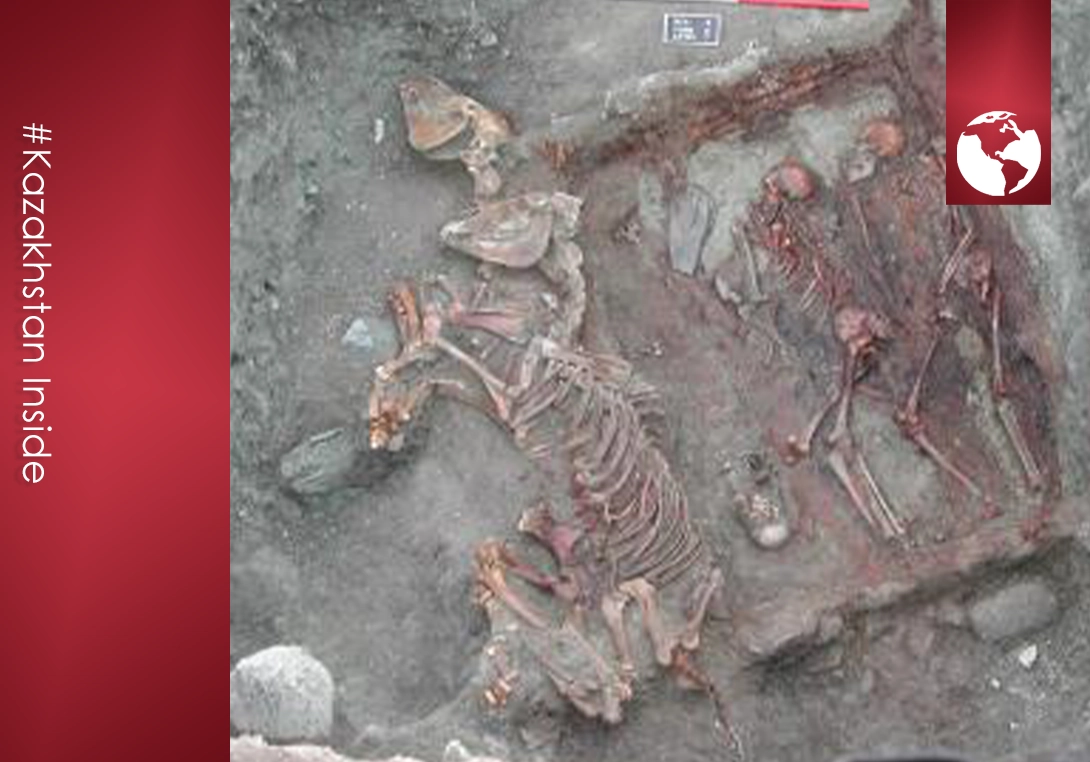Genetic research on the remains of Scythian warriors found in the Altai shows: in this region, Asians first mixed with Europeans, creating unique mixed-bloods.
At the origins of modern nomadology stand Americans, Danes, and the Royal Society of London. Together, they are publishing astonishing results from archaeological findings in Central Eurasia. Now, scientists from Barcelona have joined them — they have studied the remains of Scythian warriors found in the Altai.
The scientific journal Plos One writes that the Spanish group found the first evidence of genetic mixing between Europeans and Asians. The photo above shows the remains of a Scythian warrior, representing the physical realization of this mixing. The remains are more than 2000 years old, found in the territory of modern Mongolian Altai. Until now, the scientific community firmly believed that this mixing occurred due to the eastward migration of European peoples. However, the Spanish researchers established that the mixing occurred due to the demographic expansion of populations inhabiting modern Central Asia and Kazakhstan. This demographic expansion was made possible in part by technological innovations invented by the Scythians.
We all know that Altai is a mountain range that stretches across Russia, Kazakhstan, Mongolia, and China, and our steppes have been a historical corridor for bidirectional latitudinal migrations of Asians and Europeans. The most recent, and significant mass migrations occurred in the 20th century, which coincided with the introduction of railways in the steppes. However, in ancient times, the Altai, situated essentially in the center of the steppes, was a significant barrier to the coexistence and mestization of populations living on either side of the mountain range.
These populations lived in isolation for millennia – Europeans to the west and Asians to the east of Altai. A research team from a Spanish university and the Institute of Evolutionary Genetics has shed the first light on how the mixing of people on both sides of Altai occurred.
Iron Age Scythians — The Ideal Euro-Asians As usual, Western researchers have harnessed their, as yet inaccessible to us, forte – paleogenetic laboratories for the analysis of mitochondrial DNA (maternal lineage). DNA was extracted from the bones and teeth of 19 skeletal remains of Scythians who lived in the Bronze Age, i.e., the 7th to 10th centuries BCE. The graves of Scythian warriors, discovered in 2010, are located in the Mongolian Altai. This was the first discovery of a Scythian nomadic culture from Central Asia in East Asia.
It has been established that people living in the Iron Age, i.e., from 1240 BCE to 340 CE, which corresponds to the time when the Scythian culture prevailed in Altai, were carriers of the ideal genetic proportion (50%) of mitochondrial DNA. That is, they were completely ‘genetically balanced’ Euro-Asian or Asio-European mestizos.
This discovery is significant because previously discovered and studied remains from the same region, i.e., the greater Central Asia, showed something different – the DNA of remains in the territories of Russia and Kazakhstan belonged to European lineages, while those east of the Altai were exclusively Asian.
Coordinator of the Spanish research group, Professor Assumpcio Malgosa, states that the results may explain the reasons for the incredible ethnic diversity of Central Asia and the central part of Greater Eurasia. The Spaniards believe that the roots of ethnic diversity are in Altai, where it began to form more than 2000 years ago against the backdrop of Scythian expansion from Central Asia. Research conducted during the 20th and early 21st centuries has already shown that, on a global scale, the Scythians were the first major population of Euro-Asian mestizos. However, this was proven based on research of excavations in the western part of the Eurasian steppes, i.e., in the territories of Central Asia and Russia. The main guiding principle of the research was the unshakable belief that mestization occurred due to the migrations of Europeans to the east.
The Spaniards were the first in the world to prove that blood mixing east of Altai occurred before the Iron Age, meaning Europeans and Asians coexisted on both sides of the Altai ridge. Thus, the Spaniards significantly expanded the boundaries of the Scythian world, which gave a genetic impulse to the Russians, Ukrainians, and Kazakhs – peoples living west of Altai. Consequently, the Asian populations came under the influence of the technologically advanced Scythian culture earlier and became technologically and socially more advanced.









